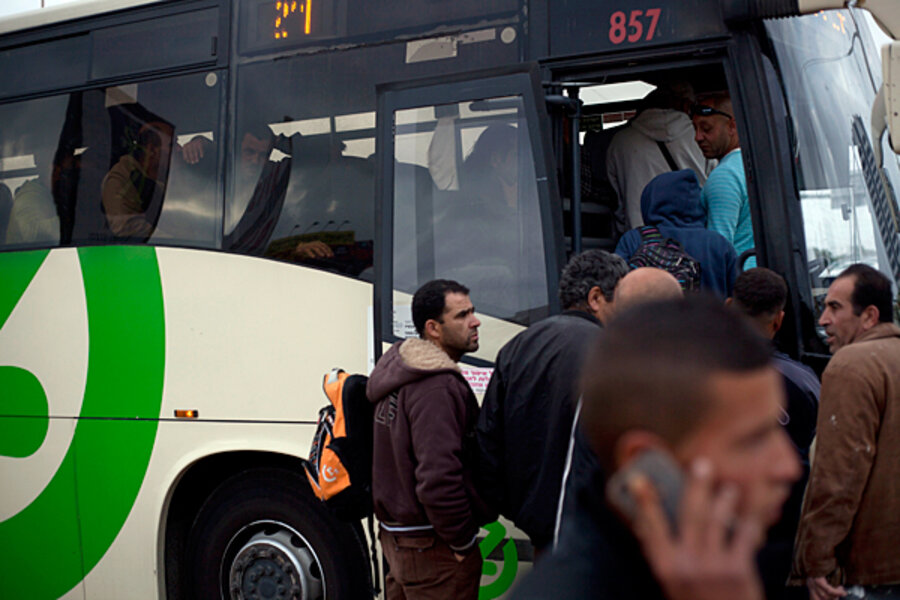From Jerusalem to Ramallah: a short bus ride and time zone away
Loading...
| Jerusalem
One of the things that continually amazes me is what separate lives Israelis and Palestinians live, particularly in the West Bank, where in places their homes are separated by less than a mile. Yes, some shop at the same Rami Levy supermarkets, there are a few rare friendships between settlers and their neighbors, Israeli settlers hire Palestinians to work on their houses, and many Palestinians pay for Israeli cellphone service because they can’t get email on the Palestinian networks (See "Israel has yet to release 3G frequencies").
But it is not uncommon to meet a 20-something Palestinian adult who has never really met an Israeli – other than soldiers at a checkpoint – or an Israeli, even one who speaks Arabic, who has never really had the opportunity to sit down and have a meaningful conversation with his peers.
Lately that divide has taken on an added dimension: Palestinians and Israelis in the West Bank aren’t even on the same time zone. Israel decided to wait a few weeks later than usual to end Daylight Savings time in order to align with Europe, while Palestinians switched over at the end of September.
While the temporary time difference is a small thing, and will end when Israel switches on Sunday, it drives home just how out of sync Israelis and Palestinians can be. In many ways, when I drive 10 minutes from my house in Jerusalem to Bethlehem, I am not only crossing into a different time zone, but a different world. And that poses a major challenge for Israeli, Palestinian, and international negotiators who are trying to manufacture peace between two peoples who hardly ever see each other any more, let alone talk to each other.
It wasn’t always thus. Between Israel’s conquering of the Palestinian territories in 1967 and the outbreak of the first intifada in 1987, Israelis regularly shopped in Palestinian cities such as Bethlehem while West Bank Palestinians joined Israelis on the many beautiful beaches that stretch along the Mediterranean coast. After the second intifada broke out in 2000, however, Israel built a separation barrier to keep out suicide bombers. Security is much improved, but Israeli-Palestinian relations have seriously deteriorated.
Some have an idea: Why not reopen the borders? It’s an idea I’ve heard voiced by everyone from Israeli professors to successful Palestinian businessmen. During the month-long Muslim holiday of Ramadan this year, Israel allowed 1 million Palestinians into the country, and, for the first time, it allowed men over 40 and women of any age to enter without a permit on Friday.
There were no terrorist attacks. Nothing blew up. Sure, a lot more Palestinians visited family members or the beach than went to pray at the Al Aqsa mosque in Jerusalem, but that is a religious issue, not a national security concern. While that short window may have allowed for a bout of interaction with Israelis, Israelis still weren't allowed into Palestinian cities, where the entrances are posted with large red signs warning Israelis that entering is forbidden, dangerous to their lives, and against the Israeli law.
If peacemakers are serious about ending the divide between these two peoples, why don't they pressure the government to let Israel just open the borders and let people meet each other directly and indirectly?
As one person told me, “Nobody needs to go to the White House, nobody needs to sign anything, Barack Obama doesn’t need to get any Nobel prizes.” Israelis and Palestinians just need to talk.
Of course, that alone won’t make peace. But without such grass-roots interactions, it will likely be much more difficult for any eventual peace deal to stick.






